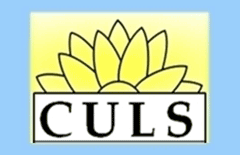Abstract
Students are required to use academic databases throughout their academic career. This paper will focus on how to create video tutorials, and measure their effectiveness, to supplement in-class database instruction highlighting an example from Wichita State University’s sociology librarian. The creation of videos with the QuickTime screencasting tool as well as methods for what to record will be covered. Findings of this study are inconclusive but inform research design for further study. This study represents an institution specific implementation of online video tutorials and the outcomes for instructors and students.
Creative Commons License

This work is licensed under a Creative Commons Attribution-Noncommercial-No Derivative Works 4.0 License.
Recommended Citation
Wyant, Nicholas
(2013)
"The Effectiveness of Online Video Tutorials as Supplemental Library Instruction,"
Kansas Library Association College and University Libraries Section Proceedings:
Vol. 3:
No.
1.
https://doi.org/10.4148/culs.v1i0.1835
References
Appelt, K.M., Pendell, K. (2010). Assess and invest: faculty feedback on library tutorials. College & Research Libraries, 71(3), 245-253.
Blake, L. (2009). How publishing online tutorials can help your patrons. Computers In Libraries, 29(4), 11-13, 31.
Bowles-Terry, M., Hensley, M., & Hinchliffe, L. (2010). “Best Practices for Online Video Tutorials in Academic Libraries” Communications in Information Literacy, 4(1), 17-28.
Carr, A., Ly, P. (2009). "More than words": screencasting as a reference tool. Reference Services Review, 37(4), 408-420.
http://dx.doi.org/10.1108/00907320911007010
Hartnett, E., Thompson, C. (2010). From tedious to timely: screencasting to troubleshoot. Electronic Resource Issues, 22(3-4), 102-112.
Kammerlocher, L., Couture, J., Sparks, O., Harp, M., Allgood, T., Information literacy in learning landscapes: flexible, adaptable, low-cost solutions. Reference Services Review, 39(3), 290-400.
Lindsay, E.B., Cummings, L., Johnson, C.M., Scales, B.J., (2006). If you build it, will they learn? Assessing online information literacy tutorials. College & Research Libraries, 67(5), 429-445
Oud, J. (2011). Improving screencast accessibility for people with disabilities: guidelines and techniques. Internet Reference Services Quarterly, 16(3), 129-144.
http://dx.doi.org/10.1080/10875301.2011.602304
World Wide Web Consortium (W3C). (2008) Web content accessibility guidelines (WCAG) 2.0. http://www.w3.org/TR/WCAG/ (accessed November 1, 2012).


